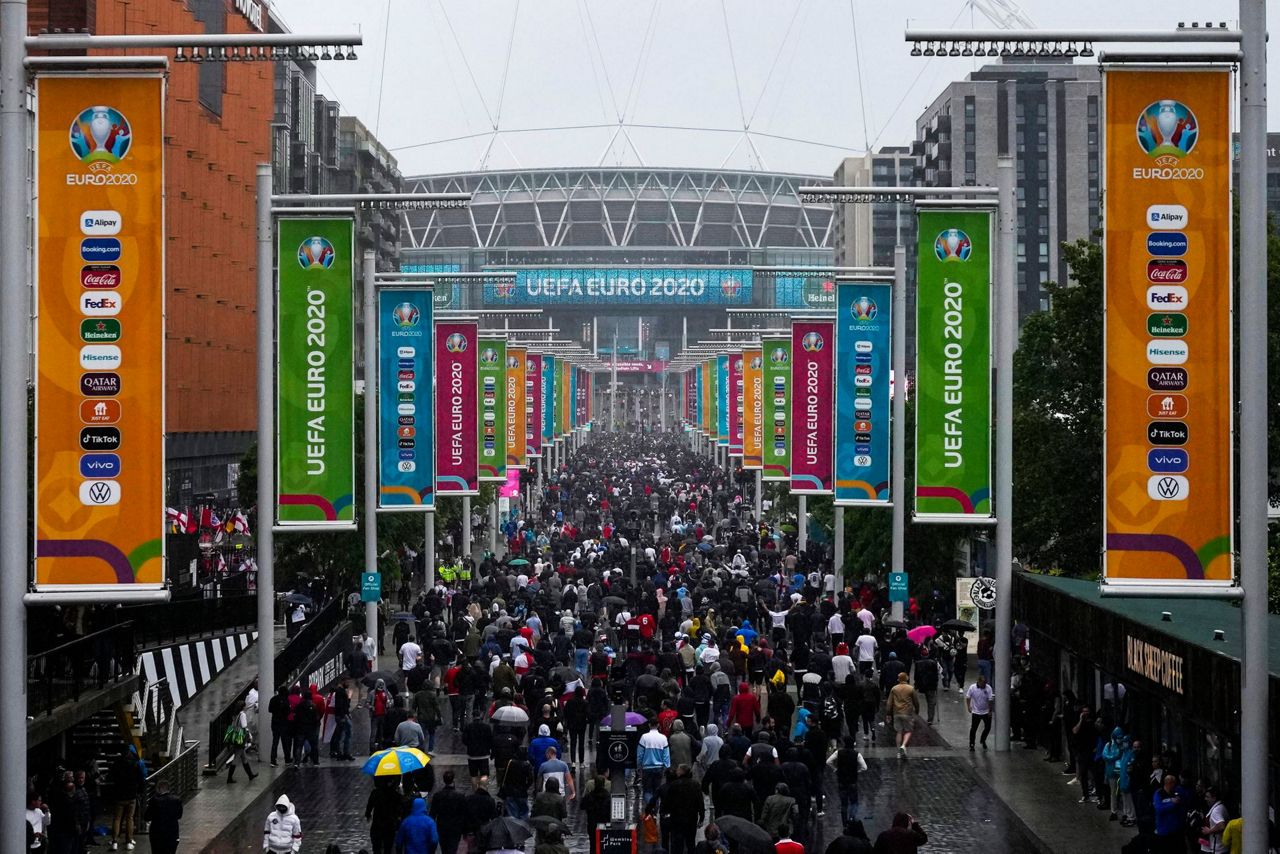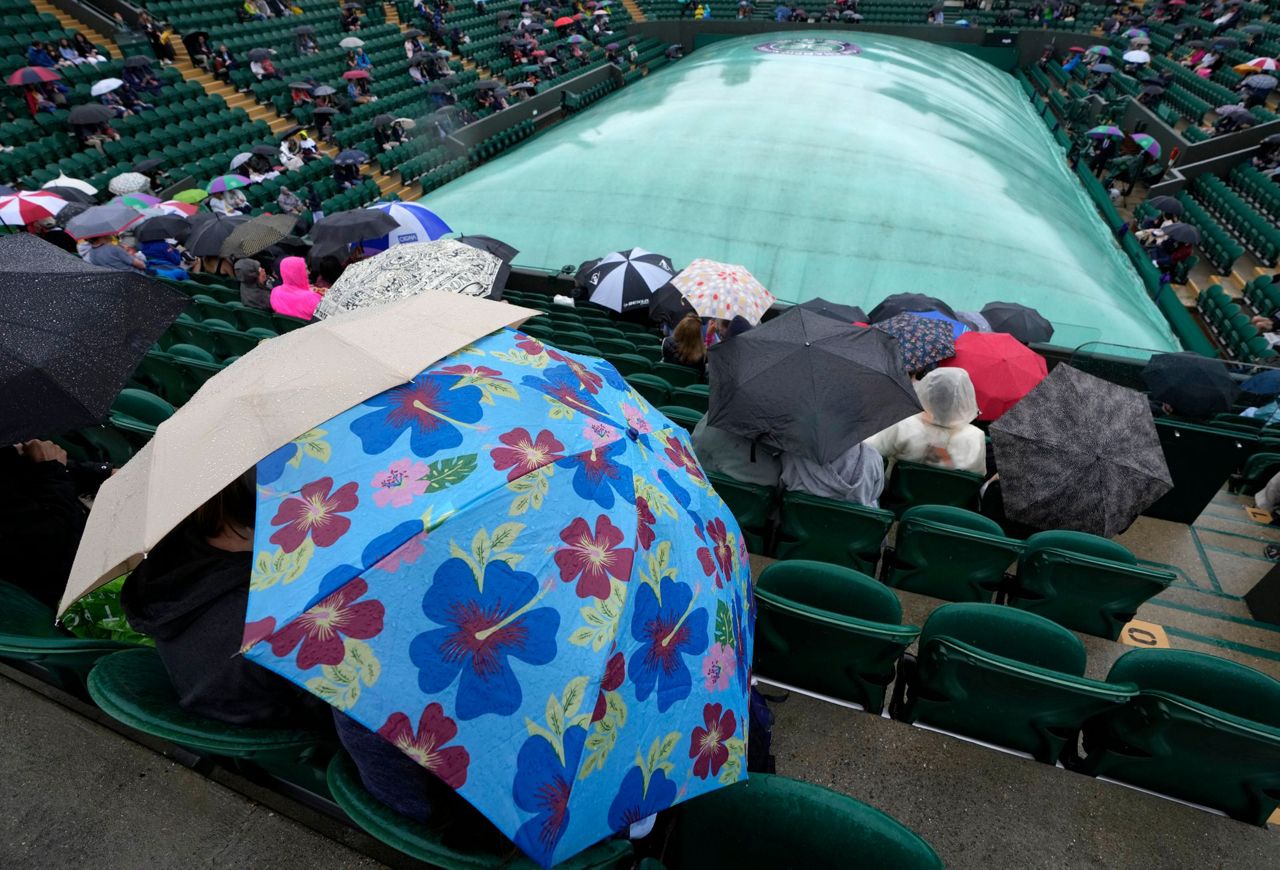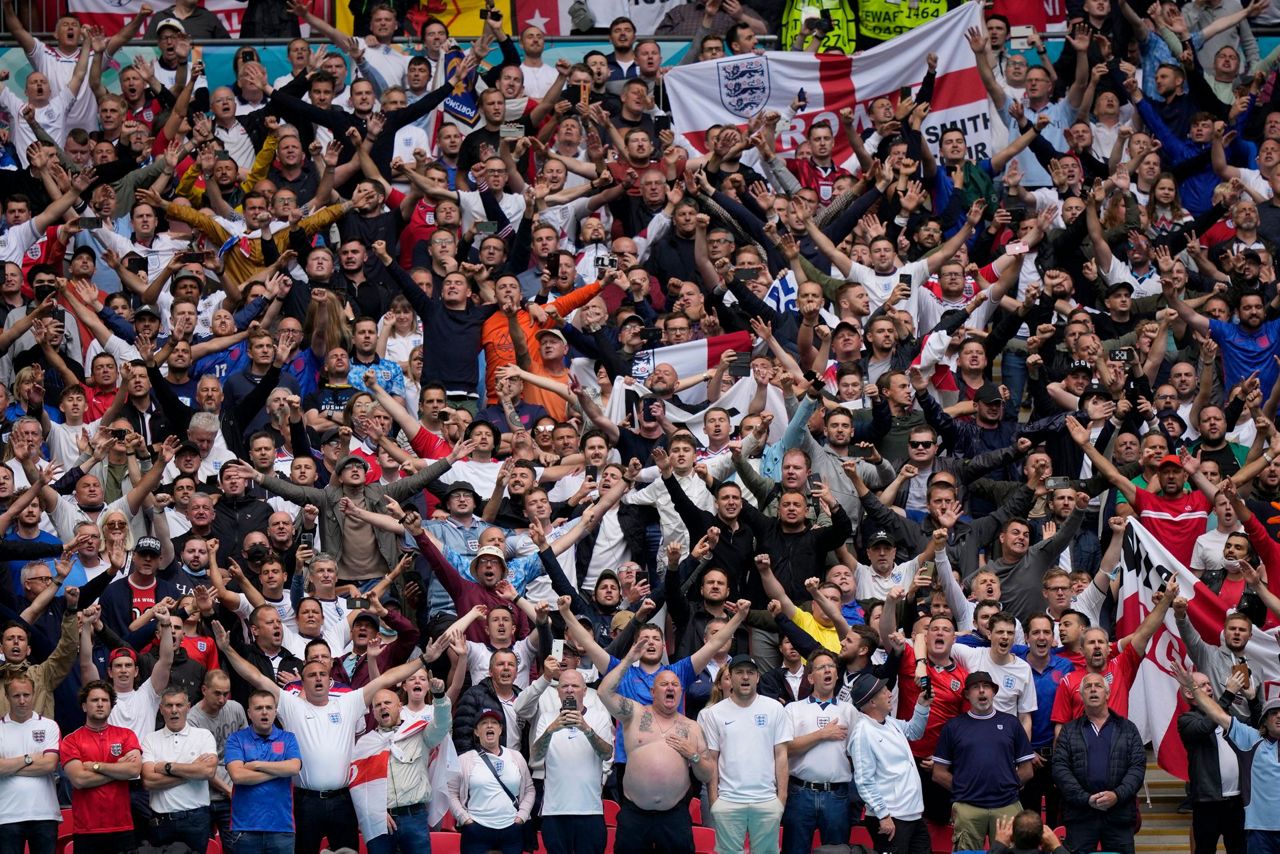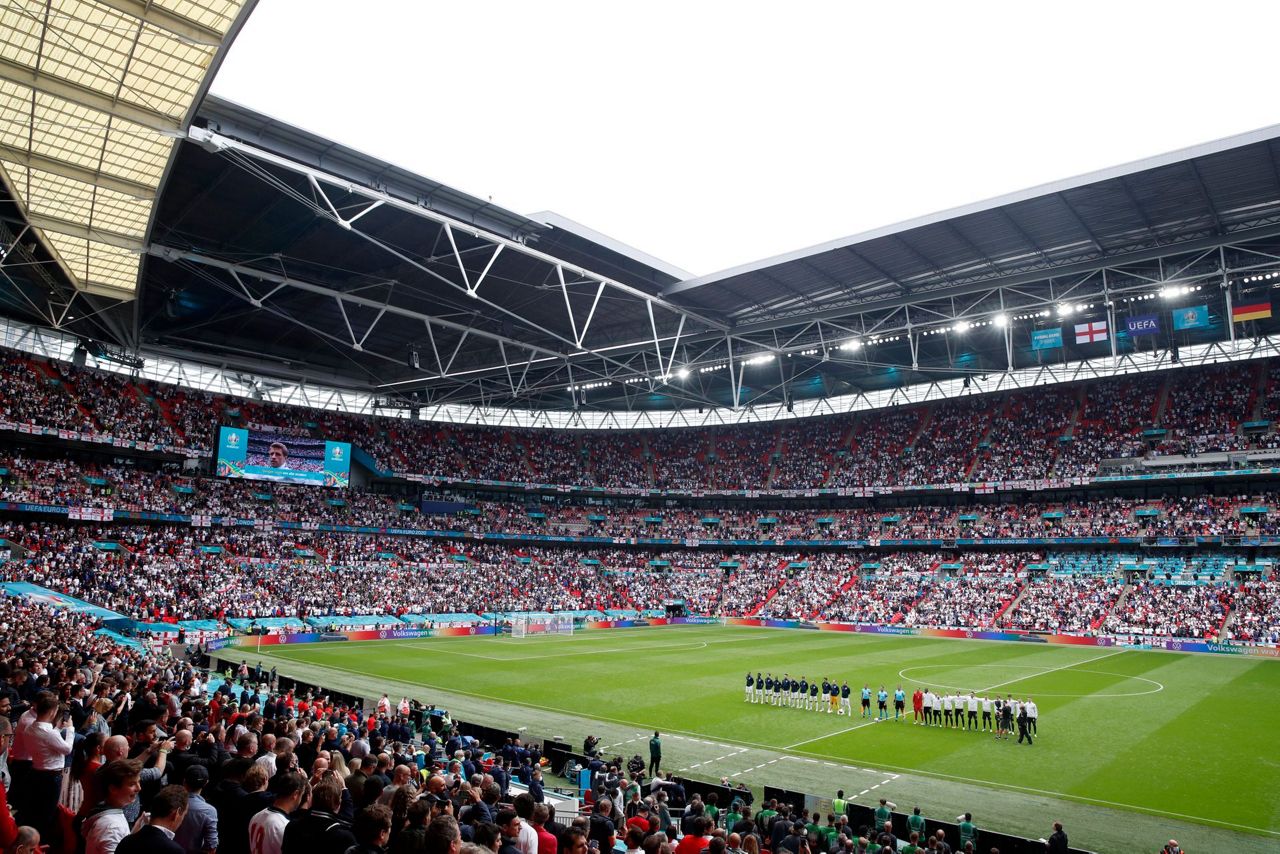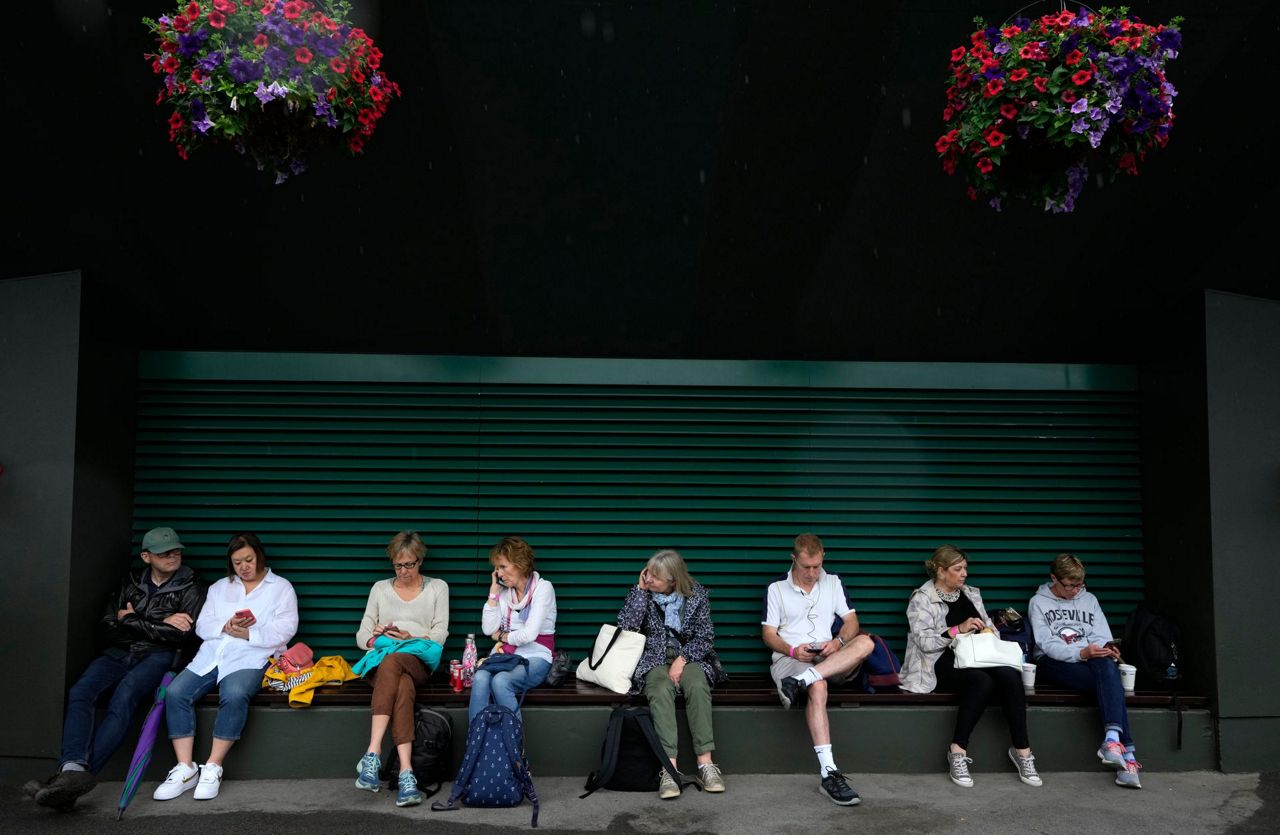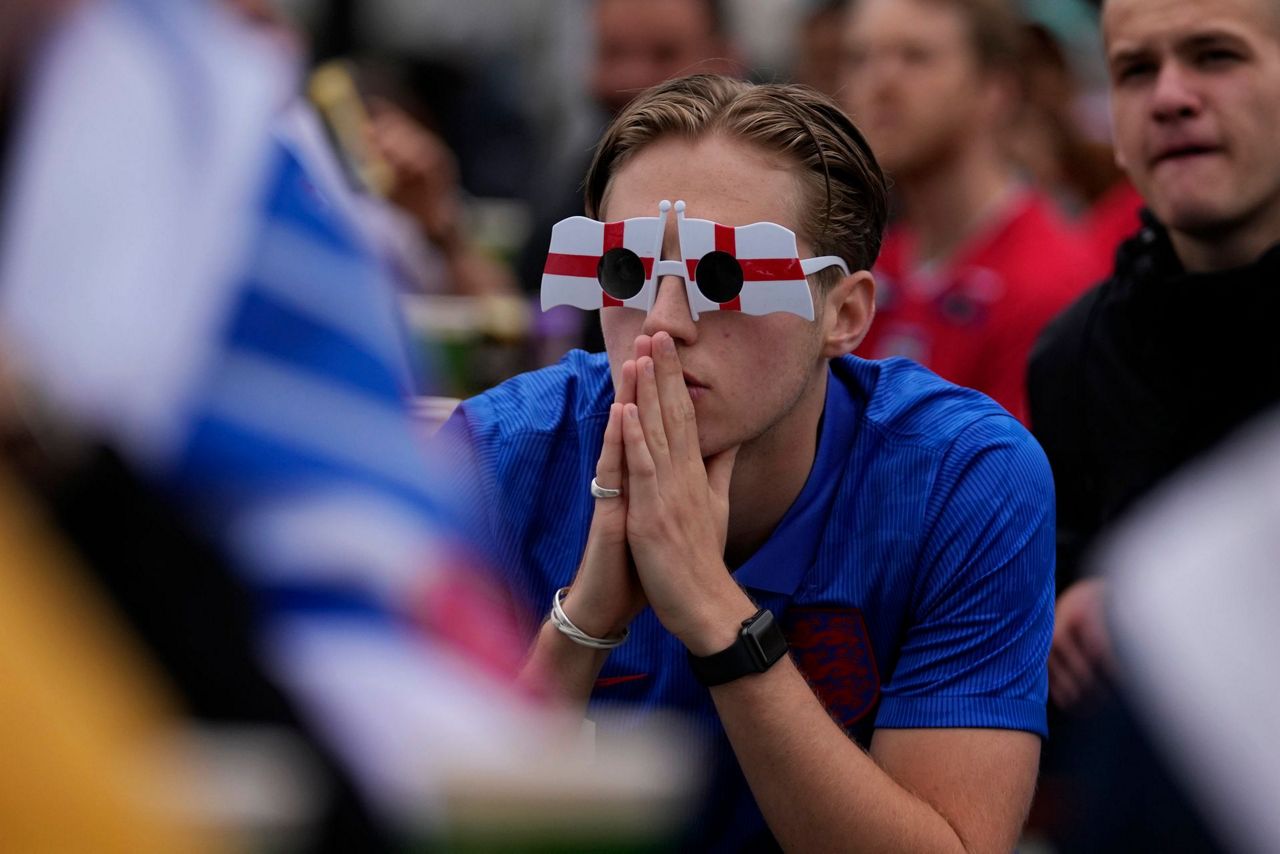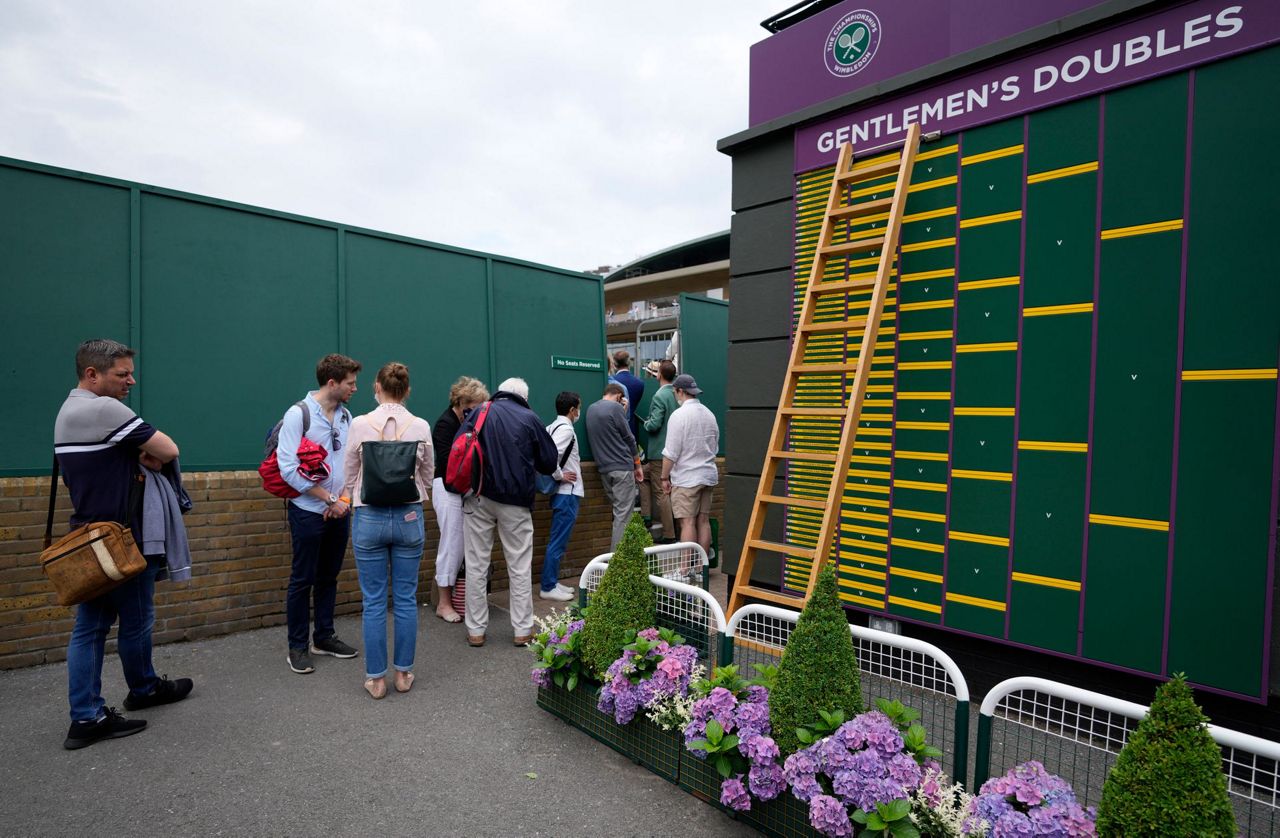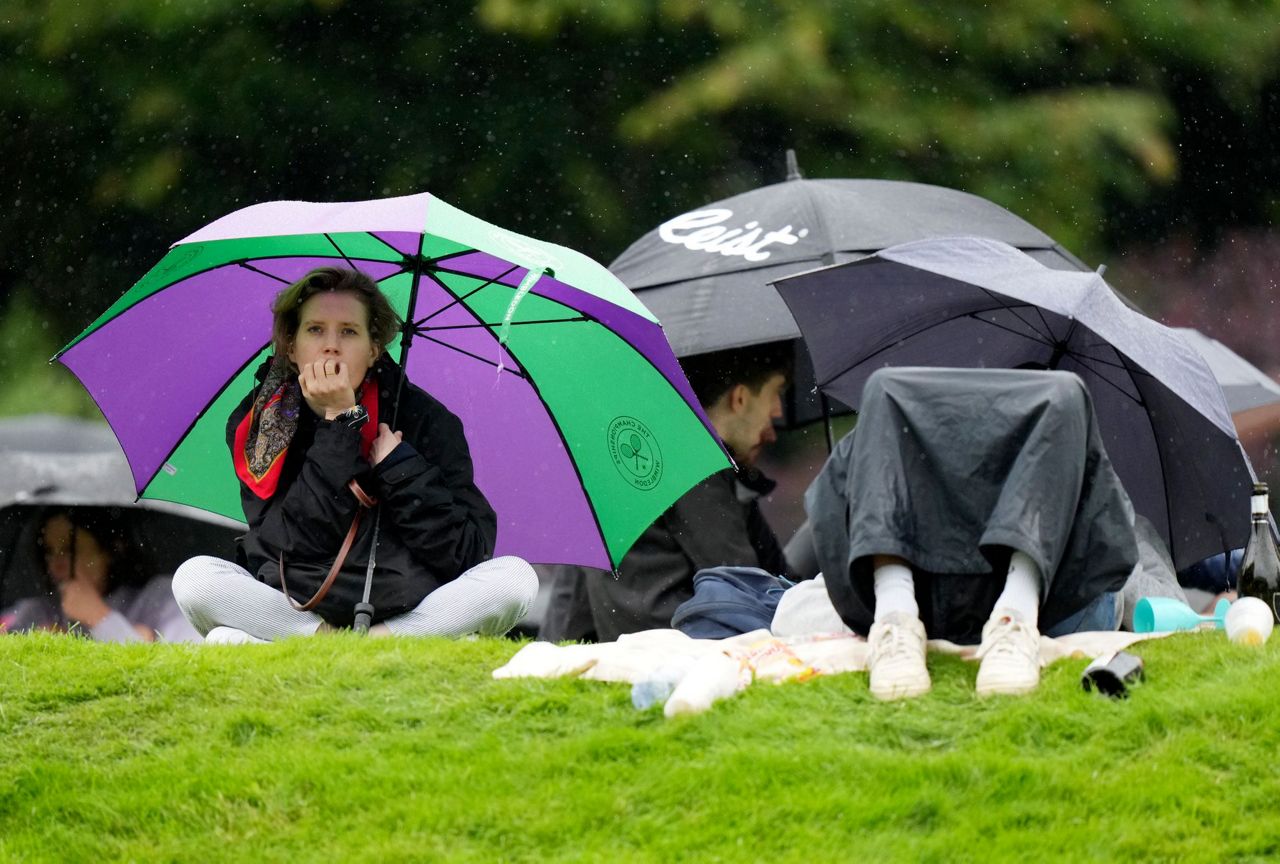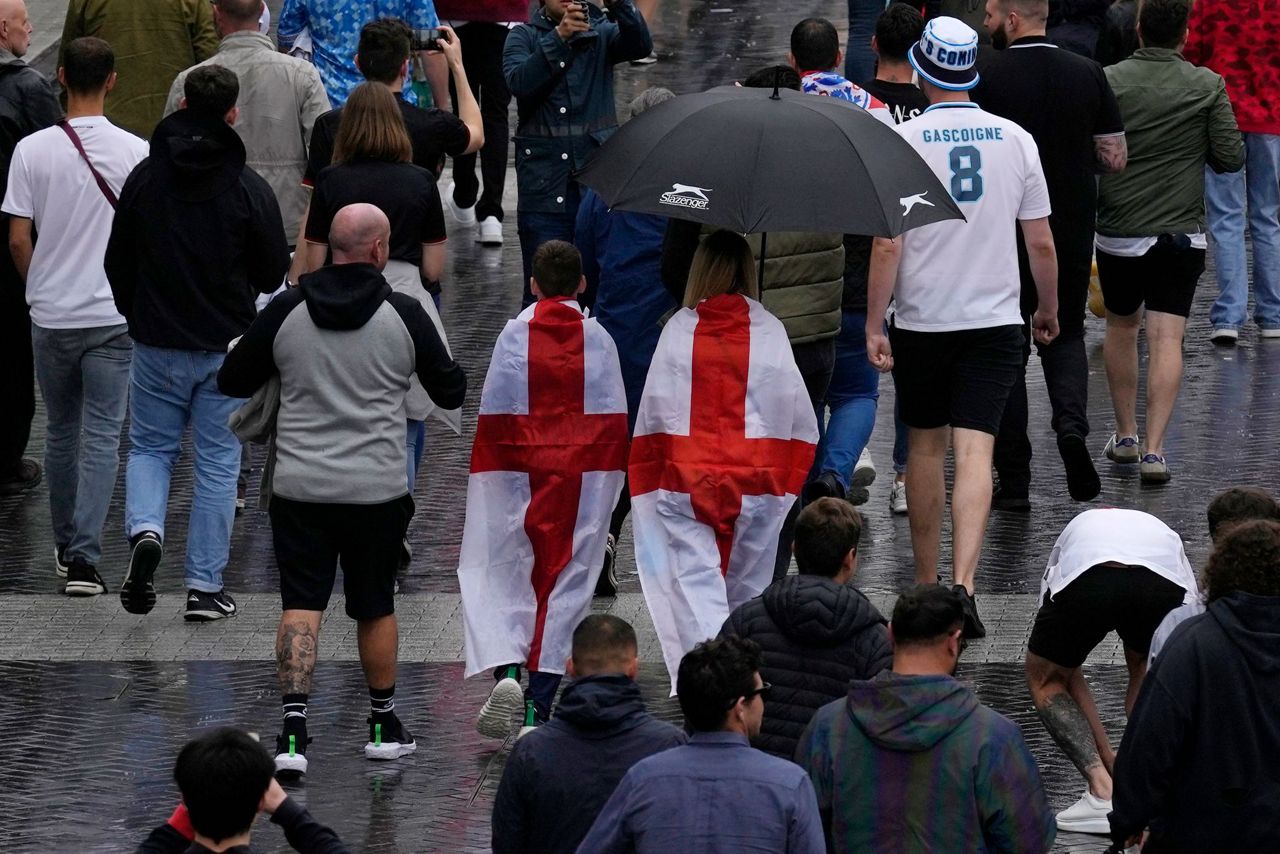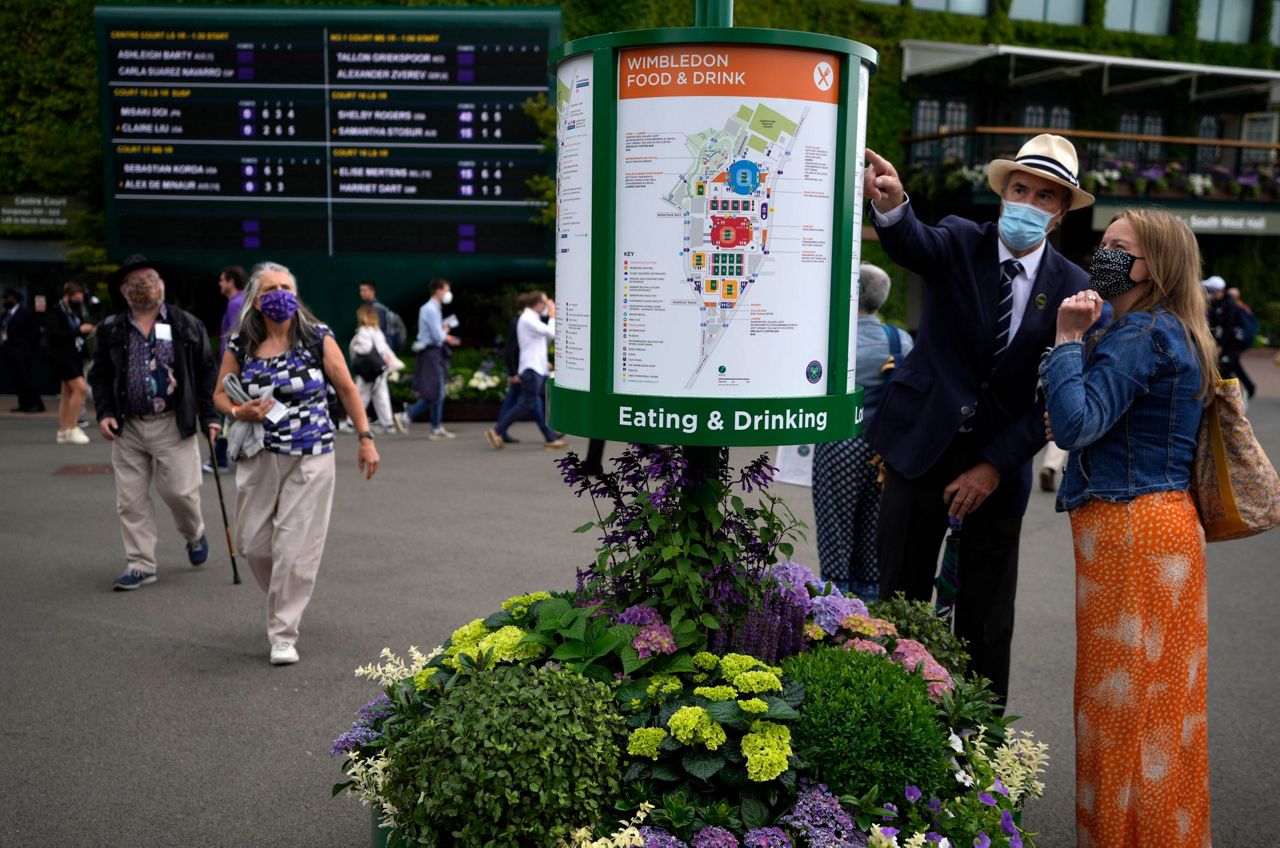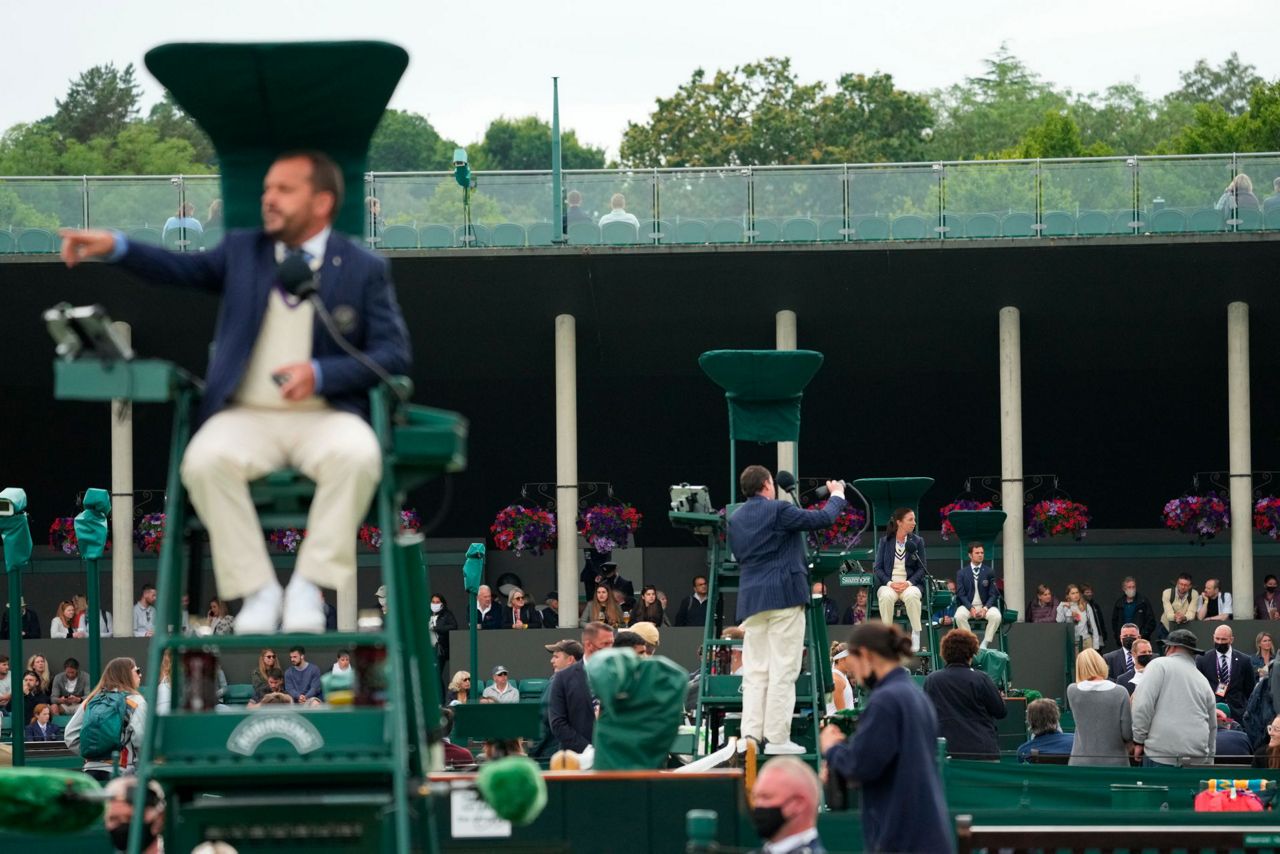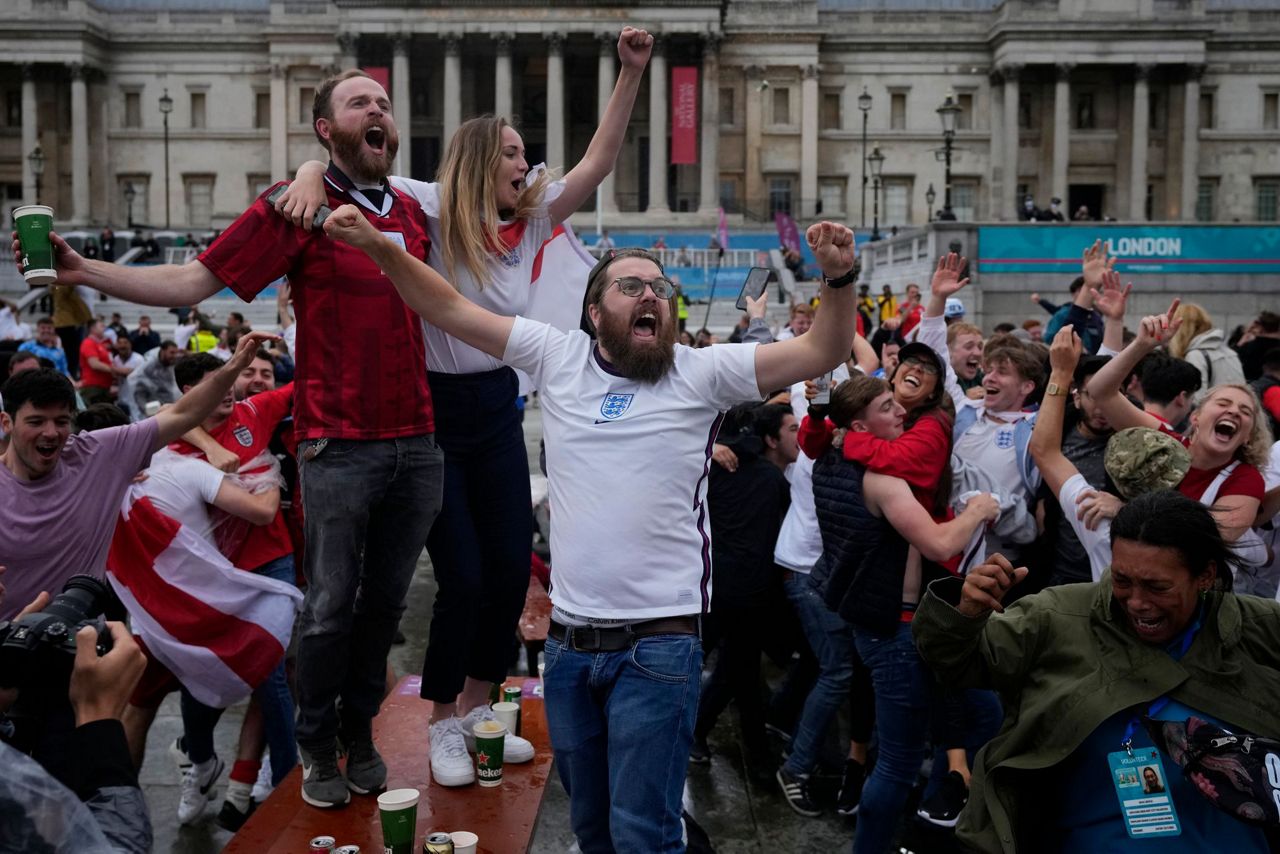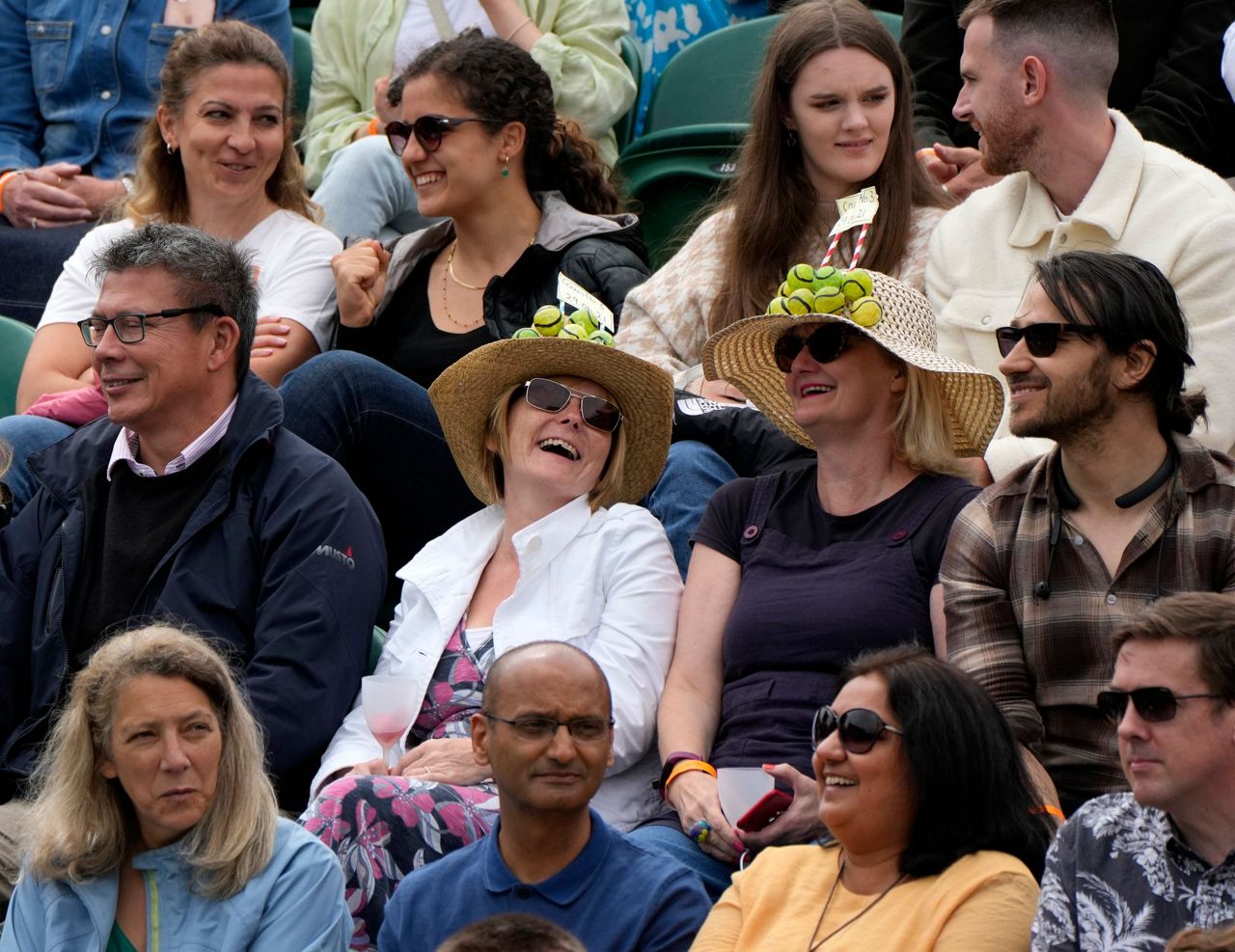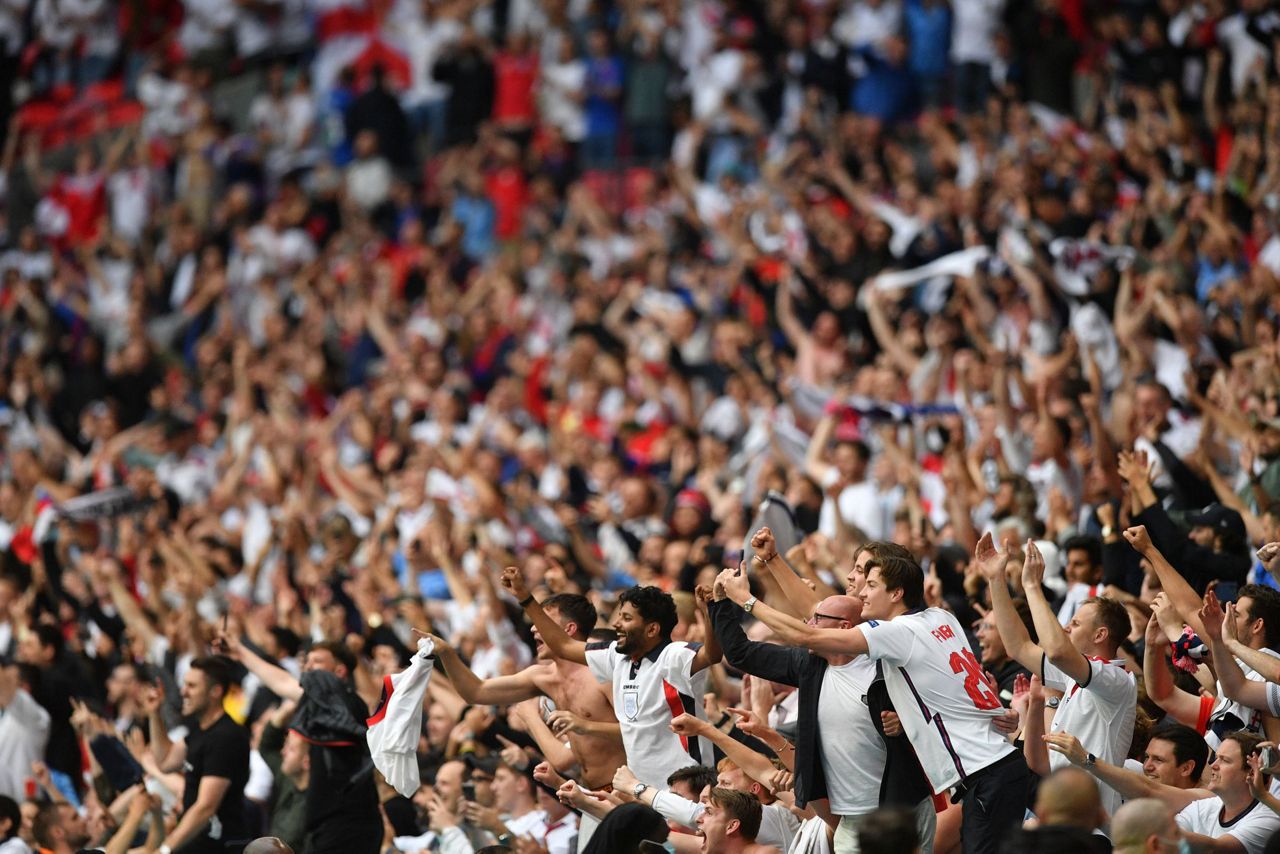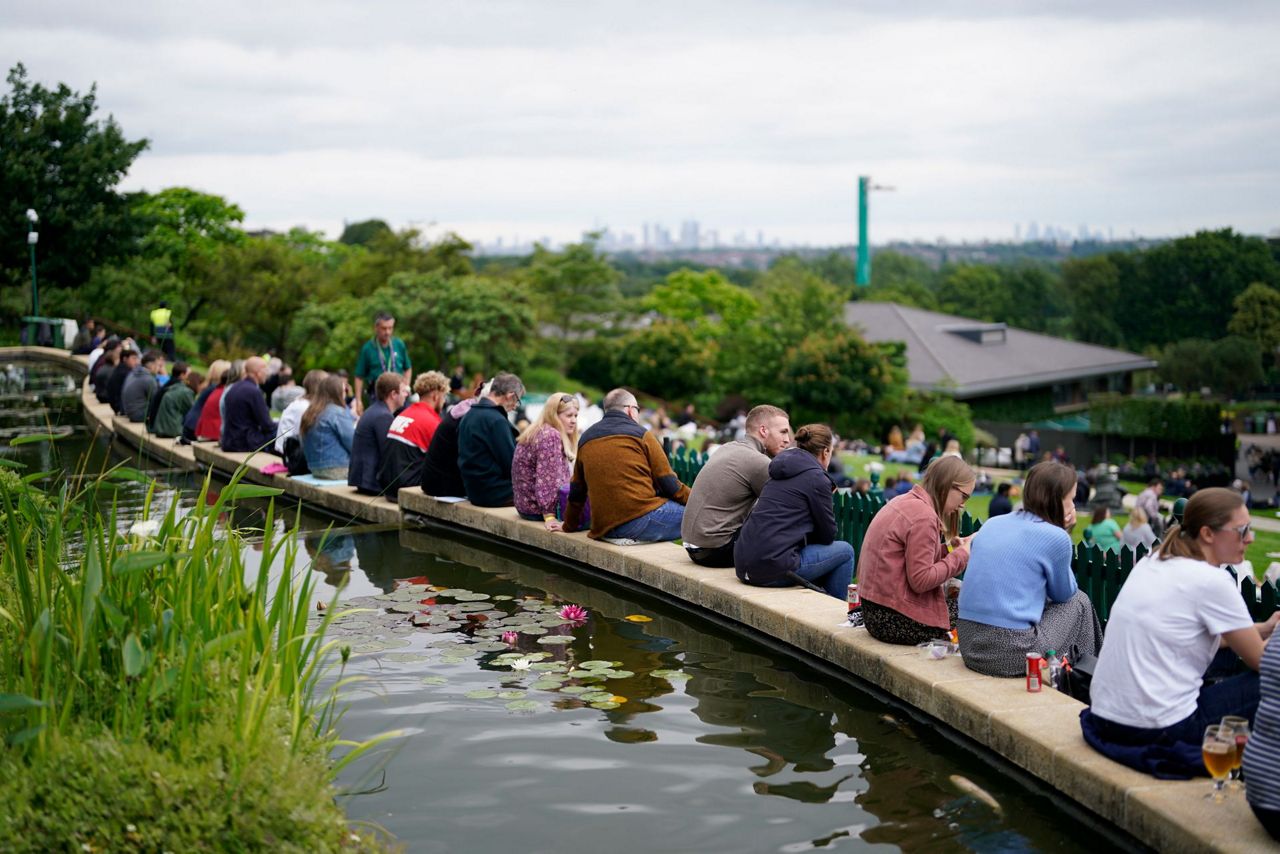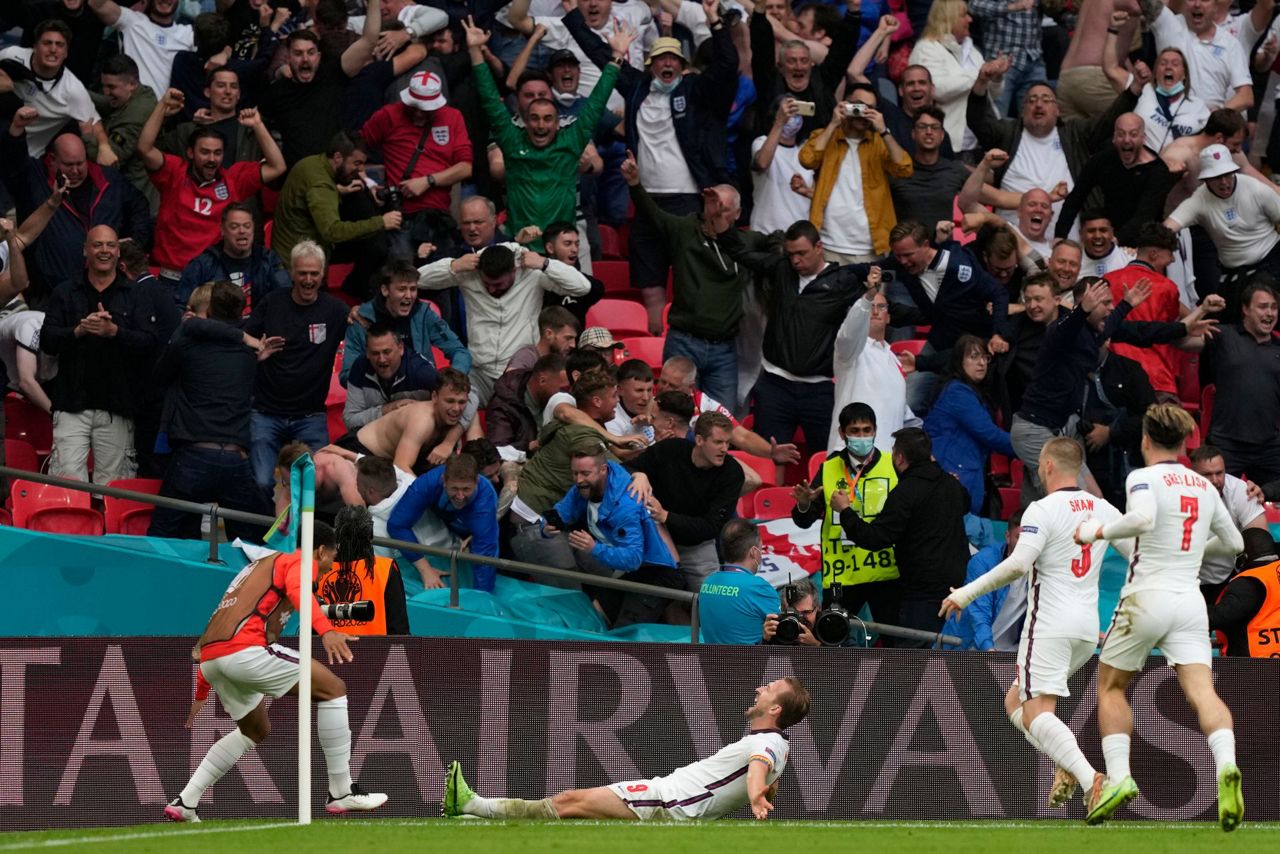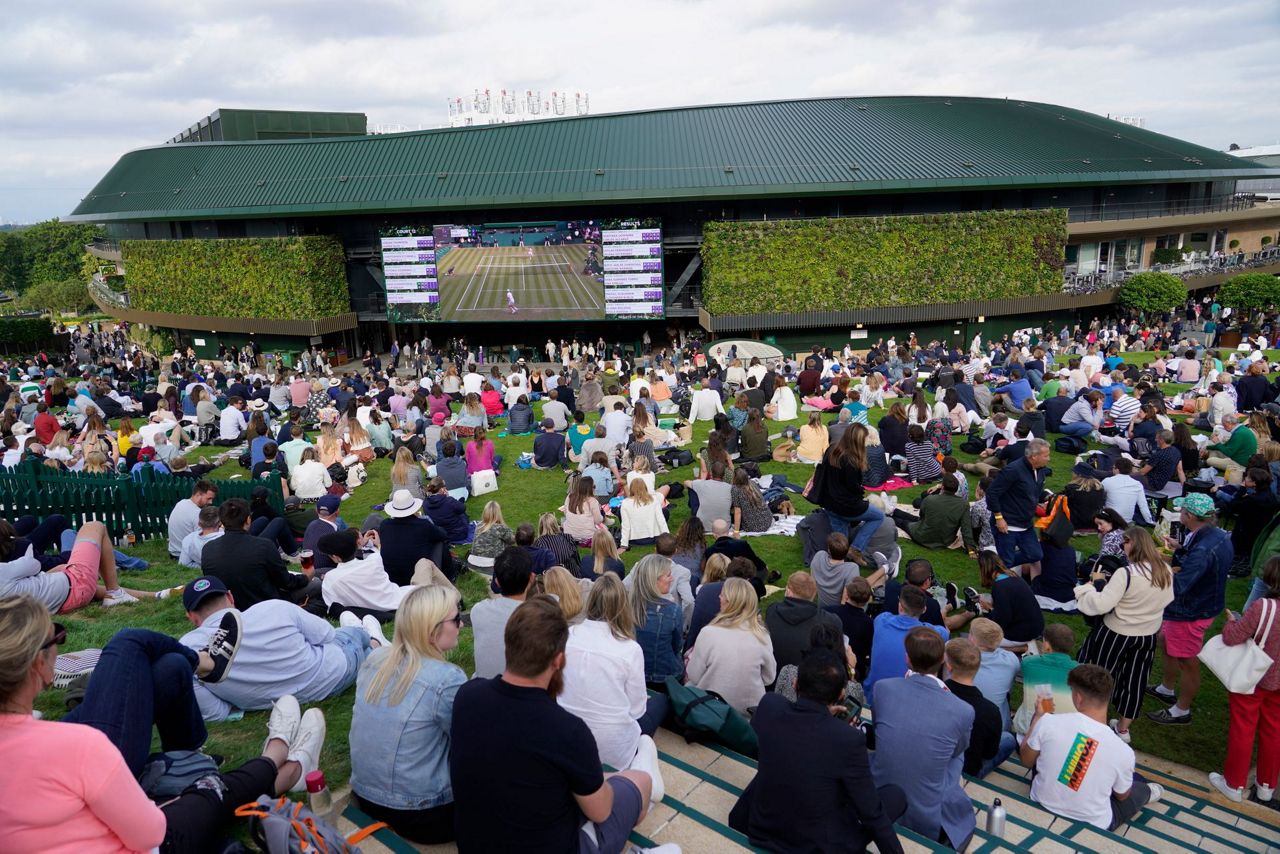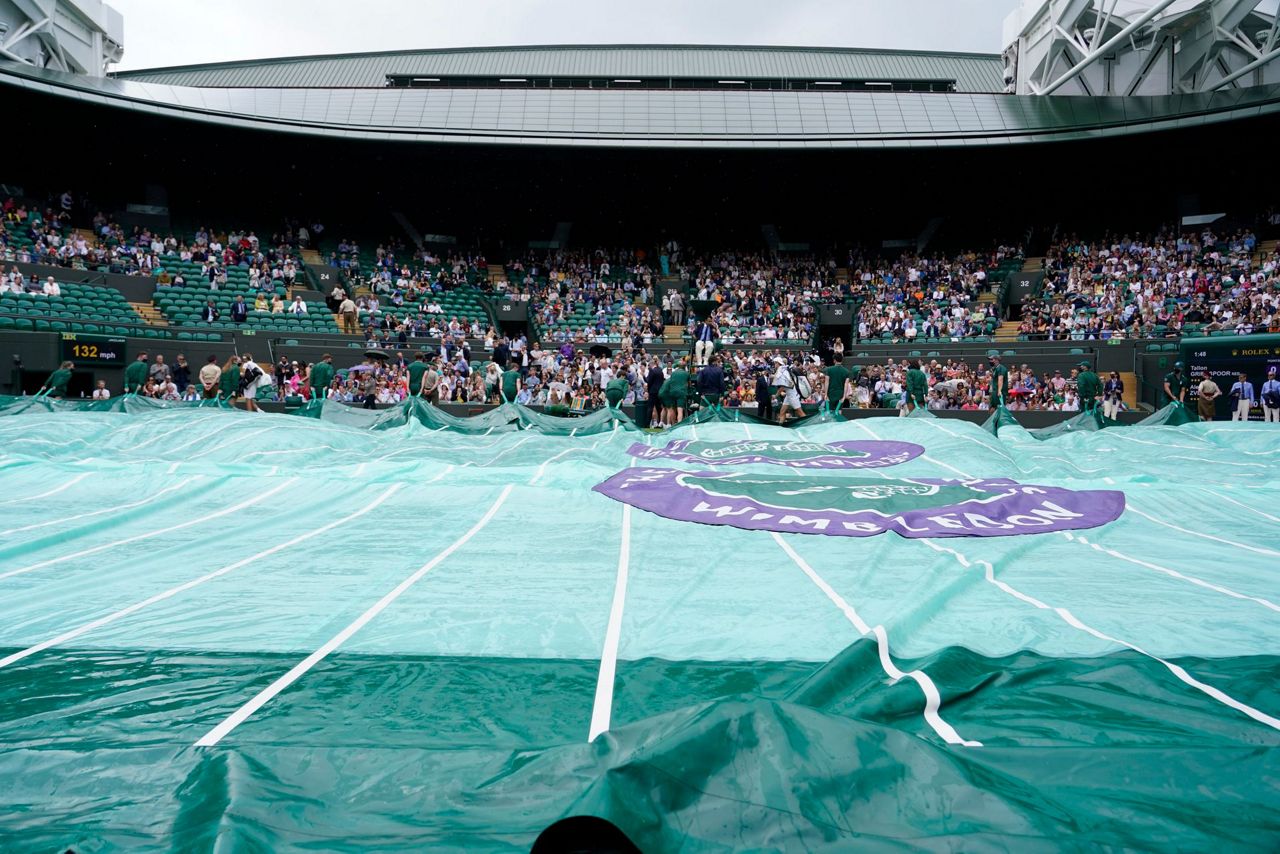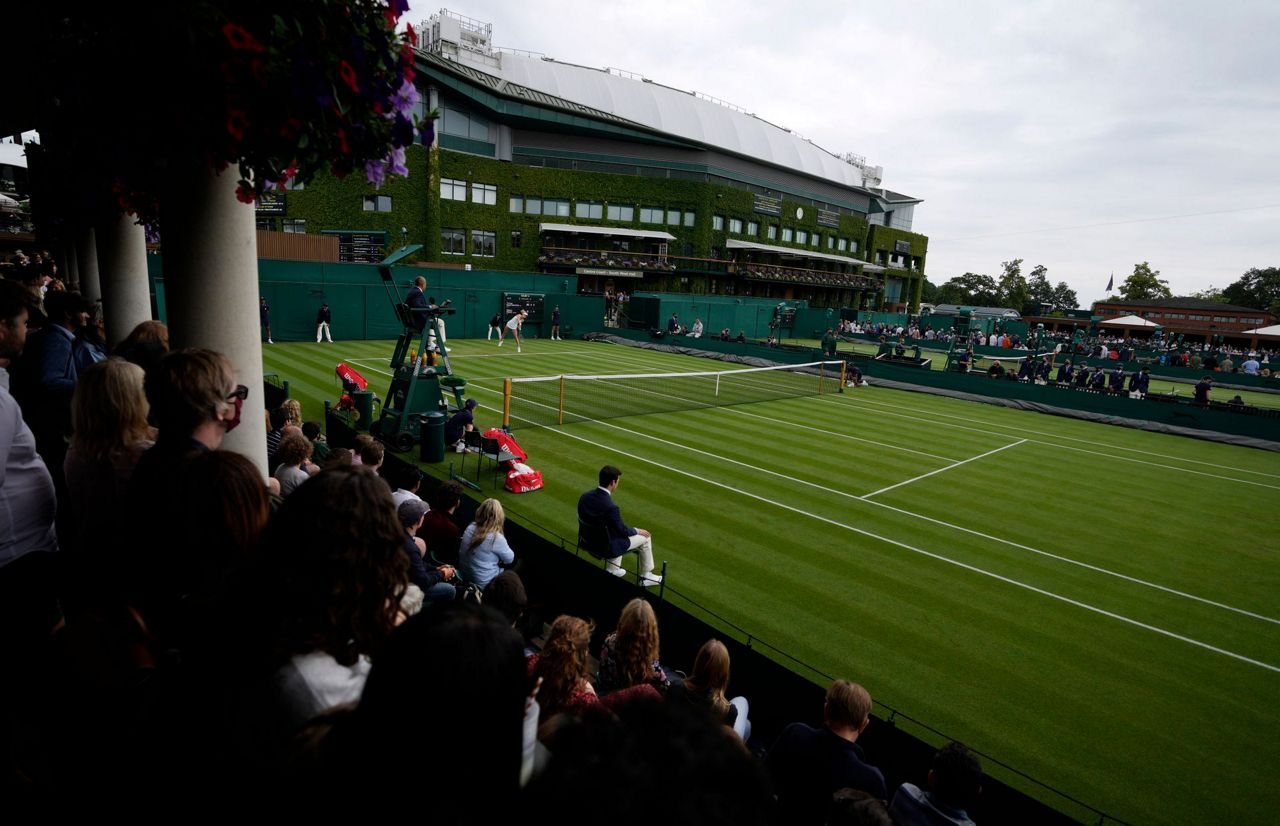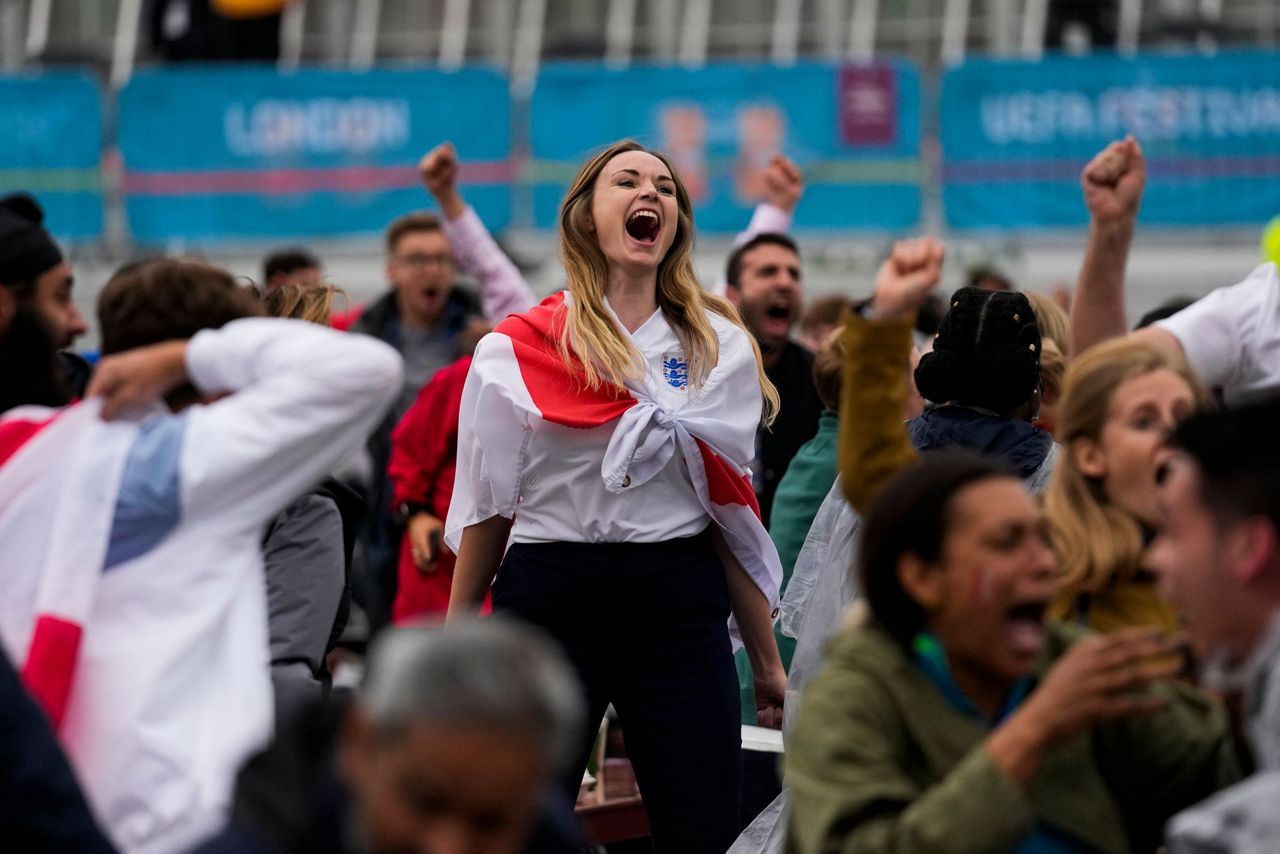LONDON (AP) — Few countries have elevated sports' role in society quite as much as Britain, so the absence of crowds during the pandemic has been a constant reminder, if any were needed, of the far-reaching toll of the coronavirus.
The steady return of fans over the past few weeks and the promise of packed-out stadiums very soon provide hope that life is returning to normal in the wake of the rapid rollout of coronavirus vaccines in the country.
On Tuesday, more than 40,000 fans were at Wembley Stadium to see England beat Germany 2-0 in the round of 16 of the European Championship. And they certainly made themselves heard after Raheem Sterling and Harry Kane scored and when belting out a passionate rendition of Neil Diamond's “Sweet Caroline” after the match.
More than 60,000 spectators will be at the stadium in north London for the semifinals on July 6 and 7 and the final on July 11 as part of the government's Event Research Programme on holding mass events safely. All ticket-holders must show evidence of a negative COVID-19 test or proof of two vaccine doses.
Although soccer is clearly the No. 1 sport in much of Britain — for Wales, it will always be rugby — there's somewhere for everyone in the country. Britain is, after all, widely considered the birthplace of many global sports, including soccer, golf, rugby and cricket. Even baseball.
Every sport, it seems, is embraced at one time or other. The year in Britain beats to the rhythm of the sporting calendar like no other.
From the raucous and drunken New Year's atmosphere at the World Darts Championship at Alexandra Palace in London, to the establishment feel of the summer test match at Lord's Cricket Ground and the festive post-Christmas soccer crowds, sporting contests provide the backdrop to everyday life in Britain. Perhaps only meandering discussions about the weather can compete with sports in the national conversation stakes.
And although sports resumed last June after the first lockdown, they were never the same. Sure, the televising of sports provided many with a much-needed distraction from the pandemic. But without fans inside, there was something substantial clearly missing despite the dubbed crowd noises.
Some sporting traditions didn't actually make it back onto the calendar last year for the first time since World War II, including the Wimbledon tennis tournament and golf's British Open.
Wimbledon returned on Monday after its break with about 7,500 fans on Centre Court helping to lift long-injured Andy Murray to victory over Nikoloz Basilashvili.
There are still social distancing rules that limit the numbers allowed into sporting venues, but it's clear that those present are making up for lost time. There will undoubtedly be some din on the final weekend on July 10 and 11 when the hallowed old court at the All England Club will be at its near-15,000 full capacity as part of the government's test program.
Like Wimbledon and the latter stages of Euro 2020, the British Open will be part of the government's test events program — up to 32,000 fans will be able to attend on each championship day between July 16-19 at Royal St. George's in southeast England.
So far, the government found “no substantial" coronavirus outbreaks among the test events in April and May, which featured the FA Cup soccer final and music's Brit Awards. However, there is evidence to suggest that some recent events, notably Scotland's Euro 2020 matches, have contributed to the spread of the more contagious delta variant.
Professor Lawrence Young, a virologist at the University of Warwick, warned that allowing 60,000 fans to crowd into Wembley is a “recipe for disaster.”
___
Follow all of AP’s pandemic coverage at https://apnews.com/hub/coronavirus-pandemic and https://apnews.com/hub/coronavirus-vaccine
Copyright 2021 The Associated Press. All rights reserved. This material may not be published, broadcast, rewritten or redistributed without permission.



